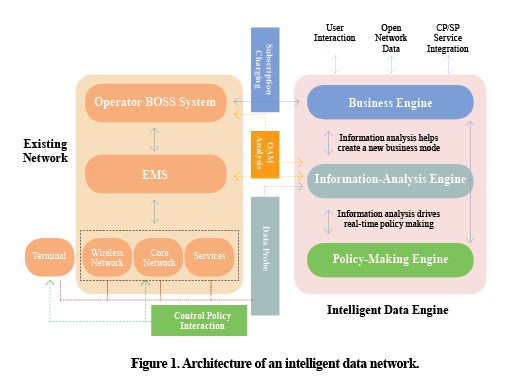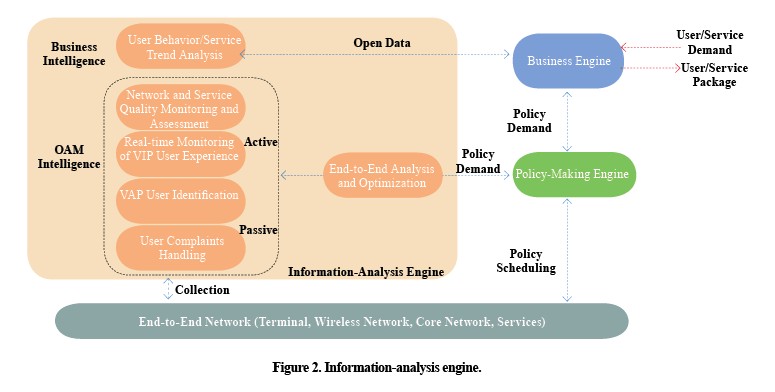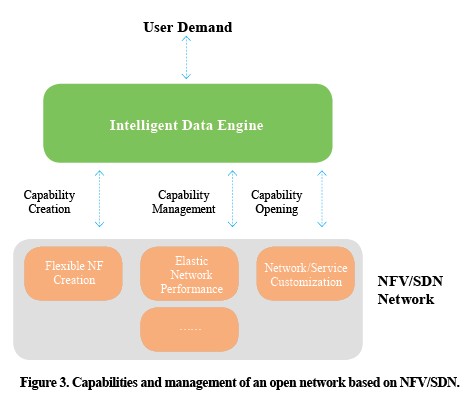Intelligent Data Network: Building a Mobile-Oriented, Service-Driven Network
The rapid evolution of mobile internet has created great challenges for telecom operators. The industrial chain has been broken open, and people are now flocking to use a wide variety of OTT internet services that are flexible, free (or low-cost), and better than traditional telecom services. This has affected operators to an unprecedented extent. It is now more difficult for them to continuously profit from voice and SMS. In response to mobile internet, operators are investing tremendous amounts to expand their networks, but profitability is declining. It is imperative for operators to transform themselves in terms of network, development mode, and operational focus. They need to change their thinking—from growth in terms of scale to growth in terms of fine-tuning efficiency. They need to change their operational focus from traditional voice to mobile internet and data. And they need to transform their telecom networks, which use multiple access technologies, into truly converged ICT networks.
To bring about these transformations, operators need to build intelligent data networks that are oriented towards mobile internet service provision. In the mobile internet era, intelligent data networks will be groundbreaking and will create significant value for operators, just as intelligent voice networks did in the voice era. The disordered, chaotic packet-switched telecom network will be transformed into an intelligent, service-driven network that is built and shared by users and operators. This will give rise to value-added services that will increase operator revenue.
To help operators create intelligent data networks, ZTE has introduced a solution with an intelligent data engine at its core (Fig. 1).


The intelligent data engine comprises information-analysis engine, business engine, and policy-making engine, all of which collaborate with each other.
Information-Analysis Engine
The information-analysis engine is based on big-data technology and makes the network visible. Using a variety of probes, the engine collects end-to-end signaling and service data from terminals, wireless network, core network, and services. The signaling and data are pre-processed and converted into key indicators and information data, both of which reflect the quality of network, service, and user experience.
The information-analysis engine analyzes indicators and data in terms of scenarios associated with a telecom operator’s routine operations. The information-analysis engine handles user complaints, assesses and optimizes service quality, monitors the experience of VIP users, determines those users with low satisfaction, analyzes user behaviors, and analyzes service-development trends (Fig. 2).


The information-analysis engine provides detailed analysis and suggestions for each scenario. It uses self-learning to induce analysis procedures and processes within the expert system and record them in a knowledge base. In this way, the system becomes increasingly intelligent over time. These analyses provide strong support for intelligent OAM and traffic-based operation.
Business Engine
The business engine increases the value of the network. Using information from the analysis engine, the business engine helps an operator innovate their business models and increase revenue. For example, the analysis engine can determine the relative success of a service. This information can inform an operator’s decisions about how to cooperate with service providers (SPs) and content providers (CPs) in order to provide higher QoS and better-targeted advertising. To increase ARPU, an operator can customize services and bundles according to user behavior.
Moreover, the business engine has open interfaces so that operators can collaborate with users, SPs, and CPs to increase the network’s ability to bear value-added services.
By enabling users to access the network in many different ways, e.g., web portal and mobile phone apps, the business engine enables users to easily query their service usage, customize services, and adjust service quality. Operators can push relevant services and bundle packages according to user preferences.
The business engine also provides open network-management interfaces to CPs and SPs. These interfaces enable unified authentication, management, and accounting between cooperating CPs and SPs. The service demands of users, CPs, and SPs determine the quality of network resources allocated so that the policy-making engine can provide services with guaranteed quality.
The business engine provides operators with more opportunity and resources to increase revenue. At the same time, it minimizes the impact of open network services on the existing BOSS system. In this way, an operator can obtain greater value for minimal investment.
Policy-Making Engine
The policy-making engine obtains network-optimization and service-optimization requirements from the information-analysis engine. It also obtains user and QoS requirements from the business engine. After analyzing all these requirements, the policy-making engine converts them into operational instructions that are delivered to implementation entities such as RAN NEs, CN NEs, service NEs, and even user terminals. This enables resources to be automatically established, adjusted, and optimized.
ZTE’s intelligent data engine facilitates collaboration between the information-analysis engine, business engine, and policy-making engine so that an operator can transform their passive, traffic-driven profit model into a proactive, service-driven compound profit model. OAM also becomes highly automated, and opex is greatly reduced.
As telecom networks evolve towards NFV/SDN virtualization, ZTE’s intelligent data engine will become even more important. ZTE intelligent data engine enables finer network analysis, which helps with business innovation and creates multidimensional, policy-driven capabilities for an operator. NFV/SDN enables elastic network performance and customization of network functions so that an operator can maximize profits, minimize TCO, and provide the best possible experience for all users (Fig. 3).


As well as increasing revenue, ZTE’s intelligent data engine also enables an operator to cheaply transform their existing networks. The information-analysis engine obtains data from relevant interfaces through hardware probes. The business engine can connect with the BOSS through existing subscription and charging interfaces. The policy-making engine can connect with NEs through standardized interfaces, for example, the Gx interface. ZTE’s intelligent data engine is a universal solution that can transform the mobile data networks of most operators.
In one particular instance, ZTE’s intelligent data engine helped a telecom company analyze and optimize its busy and idle cells. The information-analysis engine works with the policy-making engine to restrict the traffic of low-value services (e.g., P2P) that consume wireless resources in busy cells. In fact, such low-value traffic can be reduced by as much as 50%. This relieves the workload of busy cells and improves the service experience for most users. This solution has helped mobile companies guarantee VIP user experience. The information-analysis engine works with the policy-making engine to evaluate the user experience of VIP users and establish dedicated service bearers for these users. Another mobile company has used this solution to diversify their services. The business engine works with the policy-making engine to provide services such as Speed Up with One Click, for individual users, and Rapid Upload, for the media industry. This has opened up new opportunities for the operator to increase their revenue. A European operator has used the intelligent data engine to analyze and optimize network quality. The information-analysis engine works together with the policy-making engine to monitor network quality and provide corresponding optimization policies.
In the future, ZTE’s intelligent data network will have more finely-tuned analysis and collaboration capabilities, and will be even easier to operate and control. This will help operators build mobile internet-oriented, service-driven intelligent networks.